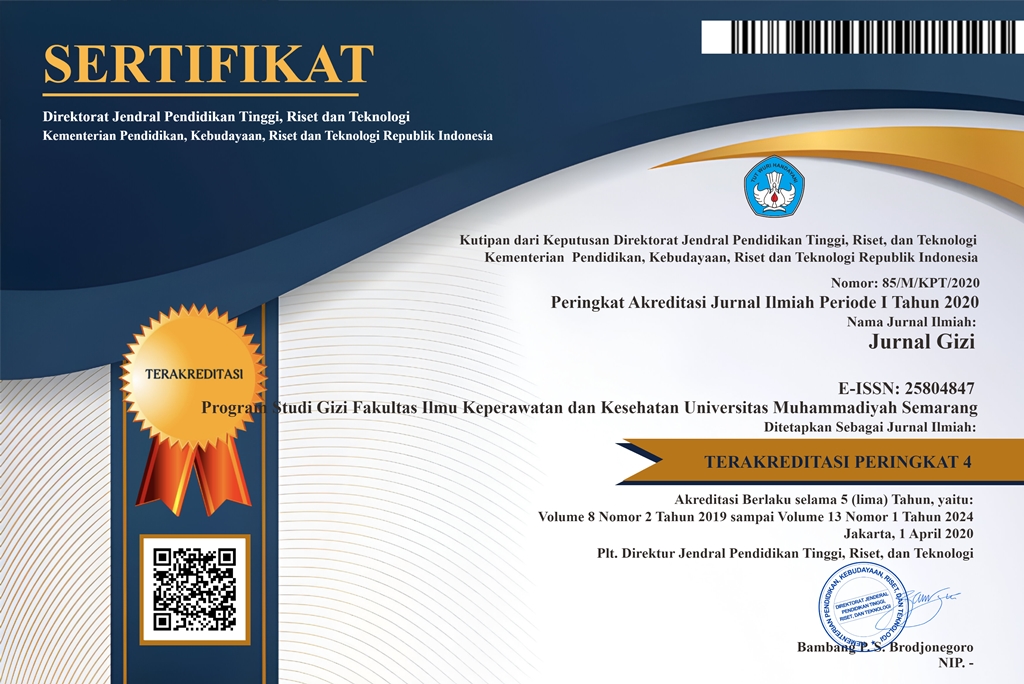Hubungan Tingkat Konsumsi Energi Dan Protein Dengan Daya Tahan Tubuh Pada Atlet Pusat Pendidikan Dan Latihan Pelajar Sepakbola Salatiga
(1)
(2)
(3)
(*) Corresponding Author
Abstract
Sports today have been decided by the United Nations as an instrument to improve the quality of education and health , development and peace in the world. Football is the most popular sport among the people of Indonesia. In the broken system of PSSI (Persatuan Sepakbolla Seluruh Indonesia) as the supreme body of football in Indonesia , we are trying to fix , but in very small coverage especially in food intake .
This is a descriptive analytic study in the field of public nutrtition. The purpose of this study is knowing the level of energy and protein intake that is associated with athlete’s endurance in Pusat Pendidikan Latihan Pelajar (PPLP) Sepak Bola Salatiga. Endurance is the general body's ability to perform continuous activity ( more than 10 minutes ) . In terms of muscular endurance is the ability of working muscle or group of muscles in a certain period of time. Being understanding of energy systems, endurance is the capability of the organs within a certain period. The data of this study have been collected by questionnaire. Measuring the endurance of athelet was done by Havard Step Test. The number of samples were 22 members of the football PPLP Salatiga, that’s taken within the perode from June 13 through Jully 20, 2013.
The result of Kolmogorov Smirnov test, showed the data of energy intake, protein intake and endurance are not normally distribution. So we used the Spearman Rank Test to test the relationship between energy intake and the athelet’s endurance. With the same method we tets the relationship between protein intake and the e athelet’s endurance. The results Rank Spearman Test showed there is a relationship between energy intake and the athelet’s endurance.(r = 0,430 and p value = 0,046) and there is no relationship between protein intake and athelete’s endurance (r = 0.299 and p value = 0.277).Full Text:
PDFArticle Metrics
Abstract view : 1172 timesPDF - 402 times
DOI: https://doi.org/10.26714/jg.3.2.2014.%25p
Refbacks
- There are currently no refbacks.
Diterbitkan oleh: Program Studi Gizi (D3 dan S1)
Fakultas Ilmu Keperawatan dan Kesehatan
Universitas Muhammadiyah Semarang
Sekretariat: Jl. Kedungmundu Raya No. 18 Semarang
Contact Person : Hapsari Sulistya Kusuma, S.Gz, M.Si (+62 85 6 41 536 553)

This work is licensed under a Creative Commons Attribution 4.0 International License.









.png)
.png)